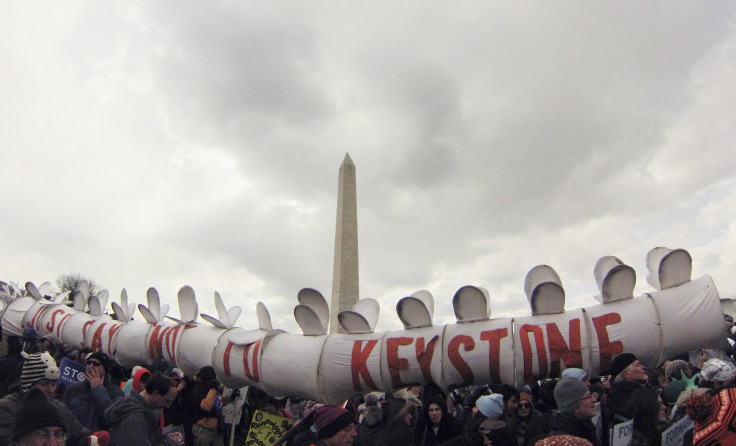Keystone XL: Obama's Environmental Legacy Hinges On Oil Pipeline's Fate

The southern half of the Keystone XL pipeline is already being built, while the administration of U.S. President Barack Obama is waiting to decide whether to approve the controversial section that would allow for the transportation of tar sands oil from Canada to the U.S. Gulf Coast for export.
The fate of the project will demonstrate whether Obama plans to take a strong stance on mitigating climate change and reducing reliance on fossil fuels.
As new Secretary of State John Kerry prepares to make his recommendation to the president on the project pending the results of an environmental review, opponents of the project are ramping up a campaign against it, while its supporters are downplaying its environmental impact.
On Sunday, some 35,000 protesters rallied in Washington, D.C., to demand that Obama reject the pipeline and stick to his promise to fight climate change in his second term.
“For the sake of our children and our future, we must do more to combat climate change,” said the president in his State of the Union address last week.
“We can make meaningful progress on this issue while driving strong economic growth,” he continued. “I urge this Congress to get together, pursue a bipartisan, market-based solution to climate change. … But if Congress won’t act soon to protect future generations, I will.”
The Keystone XL project has drawn strong criticism from environmental advocates who say that it would legitimize the energy-intensive process of extracting oil from Canada’s tar sands, increasing carbon emissions that drive climate change and also threaten natural resources, freshwater in particular.
“Obama holds in his hand a pen and the power to deliver on his promise of hope for our children," Sierra Club Director Michael Brune said in a statement. "We are asking him to use that pen to reject the Keystone XL tar sands pipeline, and ensure that this dirty, dangerous export pipeline will never be built."
TransCanada Corp. (TSE; TRP), the company that plans to build the pipeline, has dismissed the recent protests and argued against the environmental criticisms.
“My experience is the events over the weekend are not getting nearly the coverage in the media they would have a year, year and a half ago,” said Alex Pourbaix, president of oil pipelines and energy at TransCanada, Politico reported. “So I’m of the view that the temperature is going down on this issue.”
Pourbaix has argued that the pipeline would represent a miniscule amount of carbon emissions, one-tenth of 1 percent of the world’s total, according to TransCanada’s figures.
These figures do not account for the energy used in refining the oil and its transportation, nor does it anticipate the future exploitation of tar sands oil reserves, said Michael Mann, a climate scientist at Pennsylvania State University, the Washington Post reported.
Mann added that by approving the project, “we may be insuring that a much larger amount (of the oil reserves) will be economically viable.”
Last year, Obama rejected a plan that routed the pipeline through Nebraska’s environmentally sensitive Sandhills region and asked for a more extensive review of the project’s northern section.
A new route has been proposed, which Nebraska’s Gov. Dave Heineman approved last month, leaving only the State Department’s recommendation and the president’s final decision.
© Copyright IBTimes 2024. All rights reserved.





















